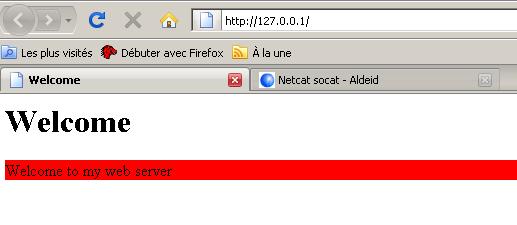Profile Builder Sketchup Plugin Free
Calculate Area, Volume, Length, Weight, and Costs Instantly in SketchUp with Quantifier Pro!
.Profile Builder is by far the most useful plugin ever created for SketchUp Richard D. I have been playing with version 3 for all of 5 minutes and I have to say that it is absolutely brilliant.It is an unbelievable time saver. 253,099 Views Free. Photorealistic rendering of your SketchUp model. 469,067 Views Free. This plugin offers a large number of products!
Profile Builder Sketchup Plugin Free Trial
“I Love your Quantifier Pro and Profile Builder. I use it every day and have recommended it to other companies. Saves me a heap of work and enables me to switch from Solidworks to SketchUp Pro!” – Dave J (Agricultural Equipment Designer)
Quantifier Pro is the ultimate SketchUp plugin for calculating instant quantity and cost reports from your model.
Calculate Area
Compute the area of walls, slabs, roofing, flooring, cladding, and more. Both projected area (for objects with thickness) and surface area are calculated.
Generate an instant Material Report showing the surface area calculation of all materials in your SketchUp model.


Volume Calculation
Quantifier Pro’s volume calculator is much more powerful than SketchUp’s Entity Info window. It can determine the total volume of groups and components as well as any nested objects within. It can even estimate the volume of objects that are not water-tight solids.
Use it to find the volume of concrete, gravel, topsoil, water tanks, and more.
Calculate Weight
By assigning a unit weight density to the objects layer, the weight of the objects in your SketchUp model can be calculated.
Unit weight can be assigned by volume, area, or length.
Quantify Length
The length, width, and height of groups and components is also reported by Quantifier Pro.
Profile Builder Sketchup Plugin Free Download
Estimate Costs
Export detailed cost calculation reports. Assign re-usable cost rules by layer, material, object, or to the entire model.
Cost Inspector Tool shows complete cost calculation for the selected object to verify accuracy
Reporting Features
- All reports are model-driven and automatically update when the SketchUp model changes.
- Fully customizable quantity takeoff reports that can show calculations for volume, length, width, height, projected area, surface area, weight, cost, and more
- Export HTML or CSV detailed Cost Estimate Reports
- Use Microsoft Excel (Windows only) to export and import unified cost data across multiple SketchUp models
- Supports multiple languages and international currency
- Full control of units and precision displayed in reports
- Use with Profile Builder 3 for even more power!
Share Cost Data across multiple SketchUp models by exporting to Excel

SketchUp 2016 or newer is required for Quantifier Pro. It is compatible with both Mac and PC. Purchase a permanent license now for only $79 US.
OR
User Guides, Tutorials, FAQs, Community Support and More…
Everything you ever wanted to know about Quantifier Pro is now available at our first-class Help Desk.
Modeling Framing in Your SketchUp Models with House Builder and 1001Bit Tools
Sketchup Profile Builder Pro

Before I get started, I want to thank all my supporters on Patreon for your support, specifically my two new supporters, Mark Jefferson and David Murphy. You are what make this channel possible. Do you like these SketchUp tutorials and videos?
If so, please consider supporting me on Patreon (click here to support)!
DOWNLOAD House Builder Here
DOWNLOAD 1001Bit Tools Here
Google Sketchup Plugin

In today’s video, we’re going to use a pair of extensions to create a wood framed house model in SketchUp.
The first is called house builder – it’s an extension from TIG that as far as I know, can only be downloaded from a forum post in SketchUcation. The second is 1001 Bit tools, which I’ve talked about a bit in the past. It has a great rafter framing tool that we’re going to use.
Housebuilder allows you to generate framed wall assemblies, as well as generating roofs, and probably most importantly, openings in those wall assemblies.
We’re going to start off by drawing the outline of our house, then we’ll use house builder to generate our framed walls.
Note that you can adjust all the settings for the framing in the settings section.
Once you’ve drawn the outline of your framing, you can come in and add walls along the lines that you’ve outlined.
Now, you can add openings using the opening creation tools. This extension comes with the ability to quickly add door and window openings, as well as move them around within house builder assemblies. This allows you to quickly and easily generate openings in your framed walls with proper framing.
Once we’ve developed this for our first floor, we’re going to add rafters with 1001 bit tools. I will note, you could also use and extension like Medeek Truss from Nathaniel Wilkerson, but that is a paid extension, where 1001 bit is free.
Now, we can add our upper level framing, then we’ll work on our roof. In this case, what we’re going to do is use 1001 bit tools to generate the rafters along our edges. Once again, Medeek Truss gives you more options for this if you don’t mind paying a few bucks.
To use 1001 bit tools, we’re going to start by generating the footprint of our roof as a face. Then we’ll use the “Automatically Create Hip Roof” function to generate the roof faces, then finally we’ll use the generate rafter function to finalize our roof.
Leave a comment below and let me know what you thought!

